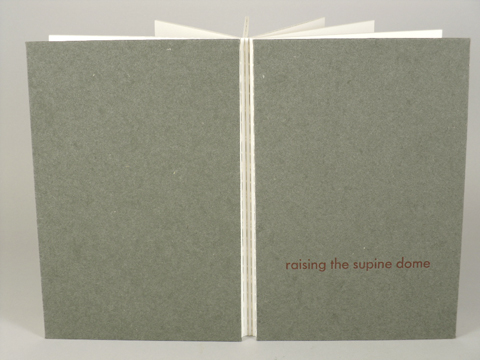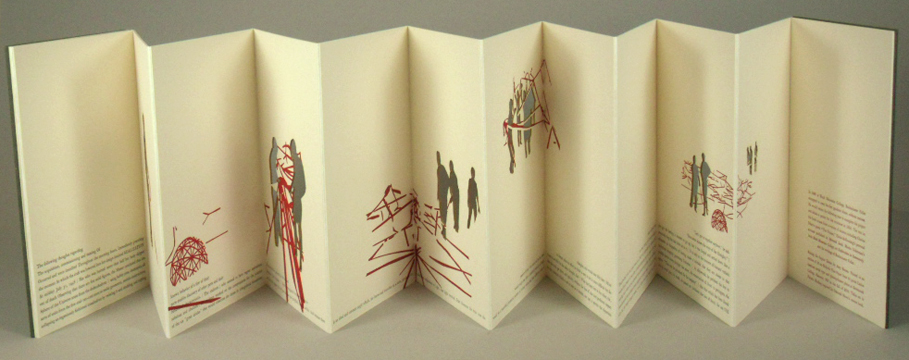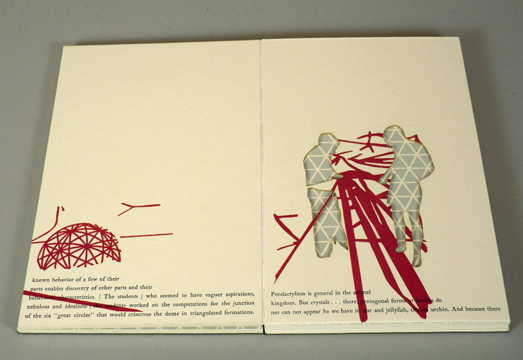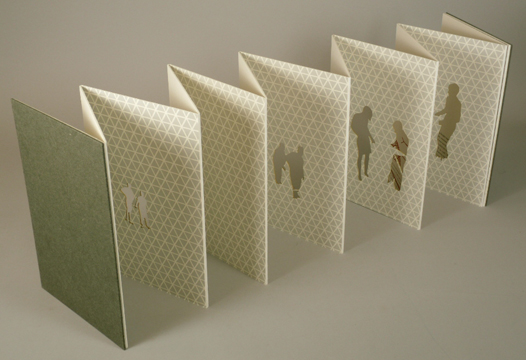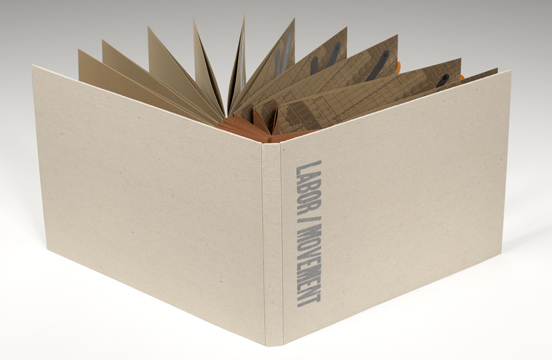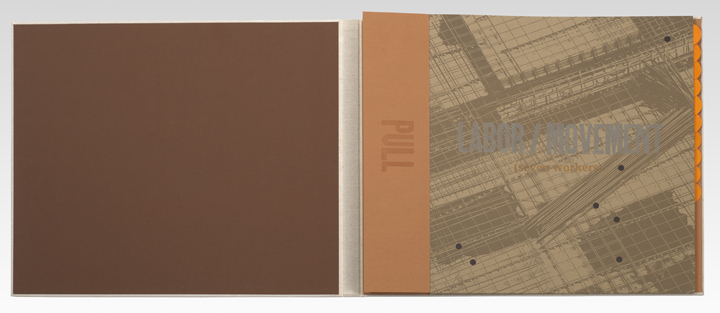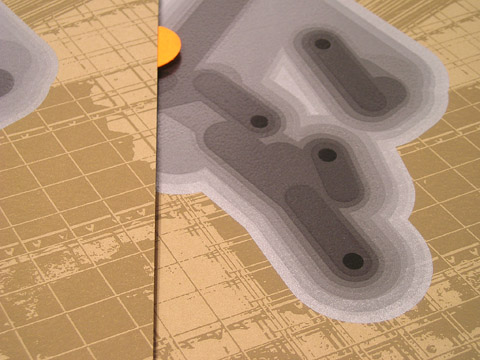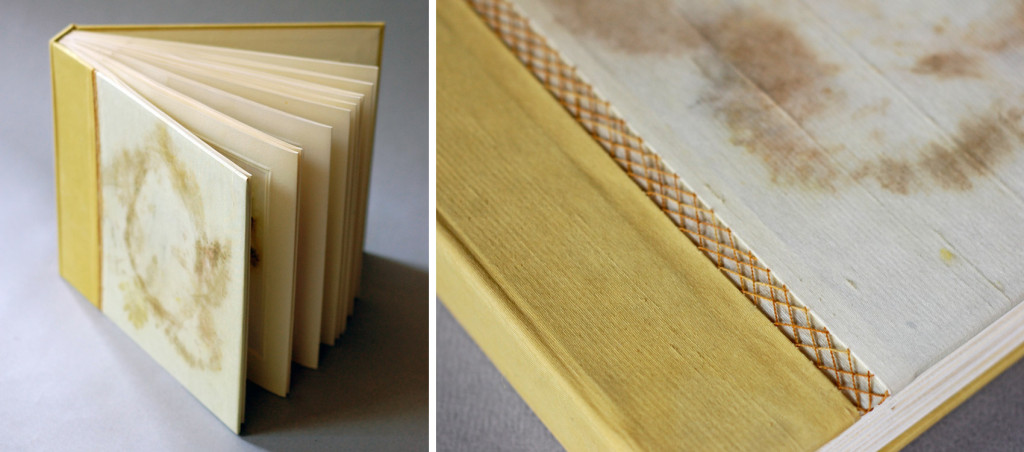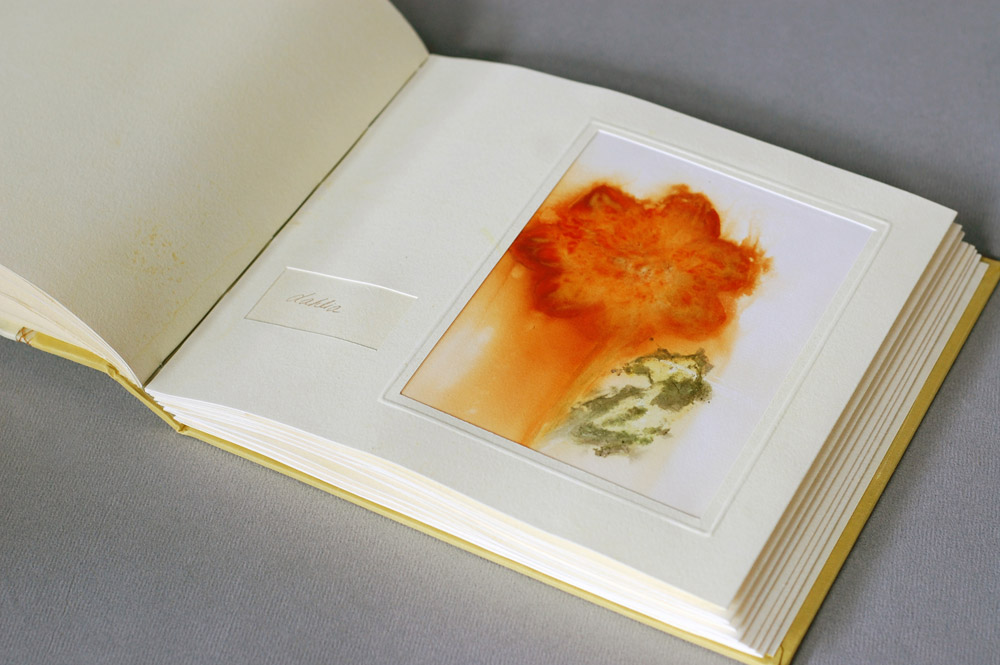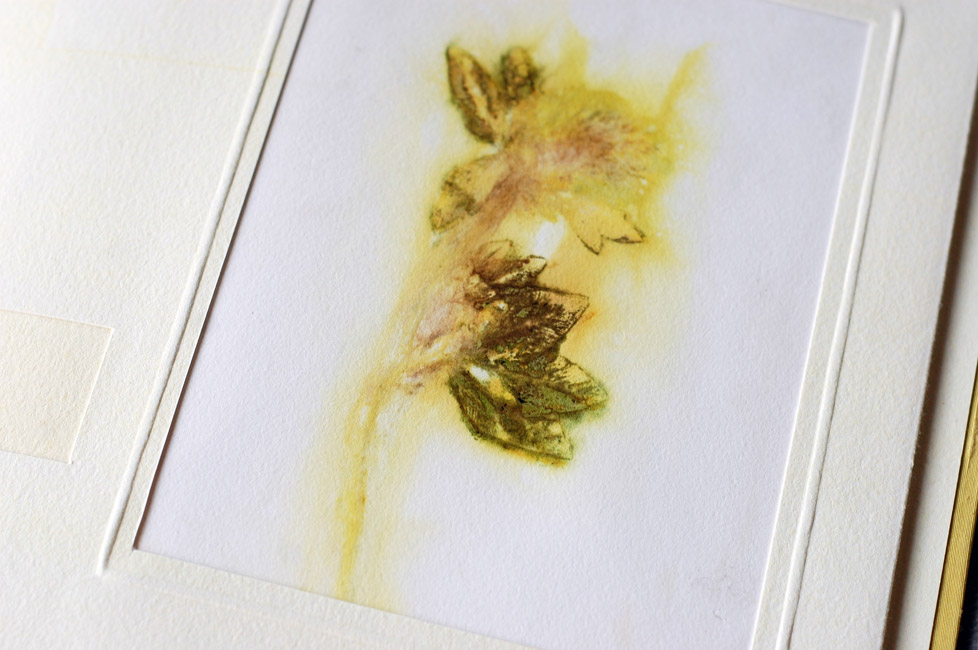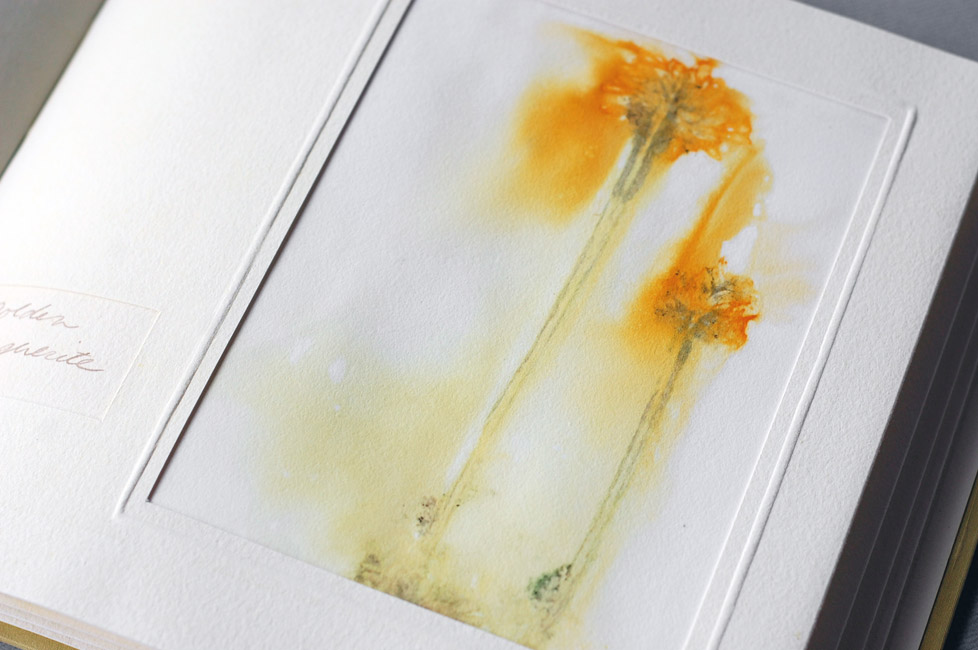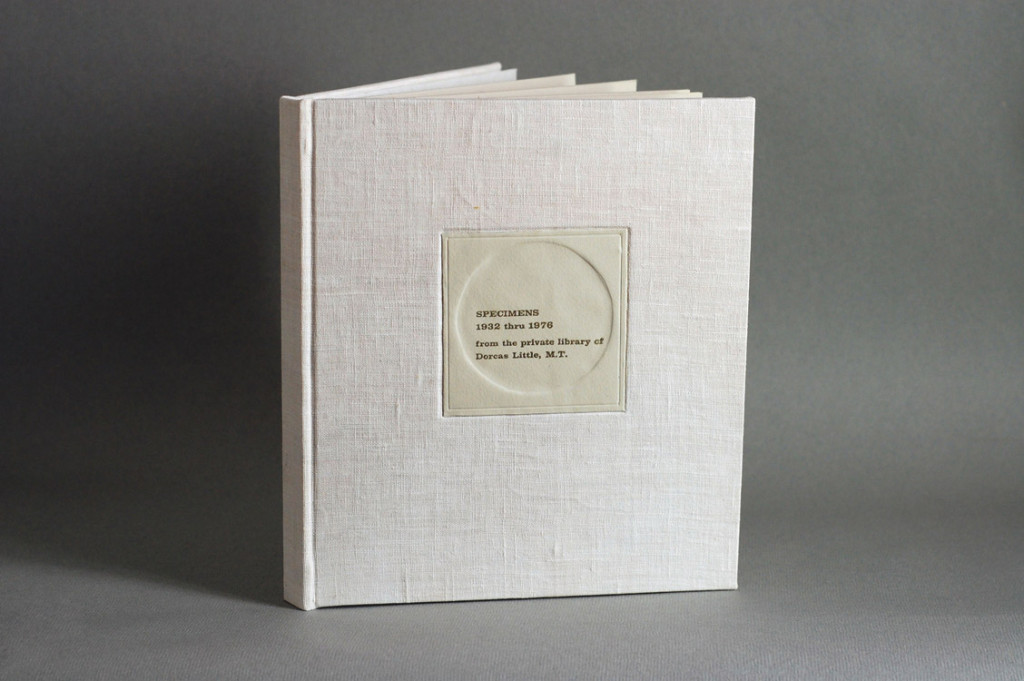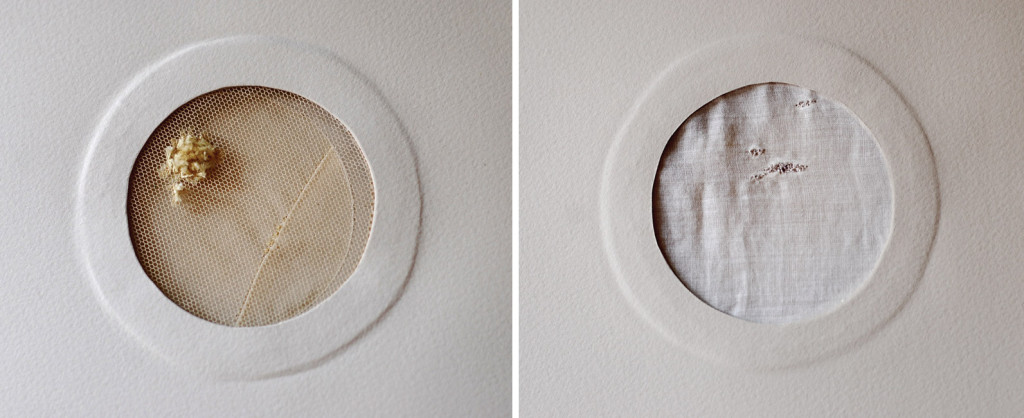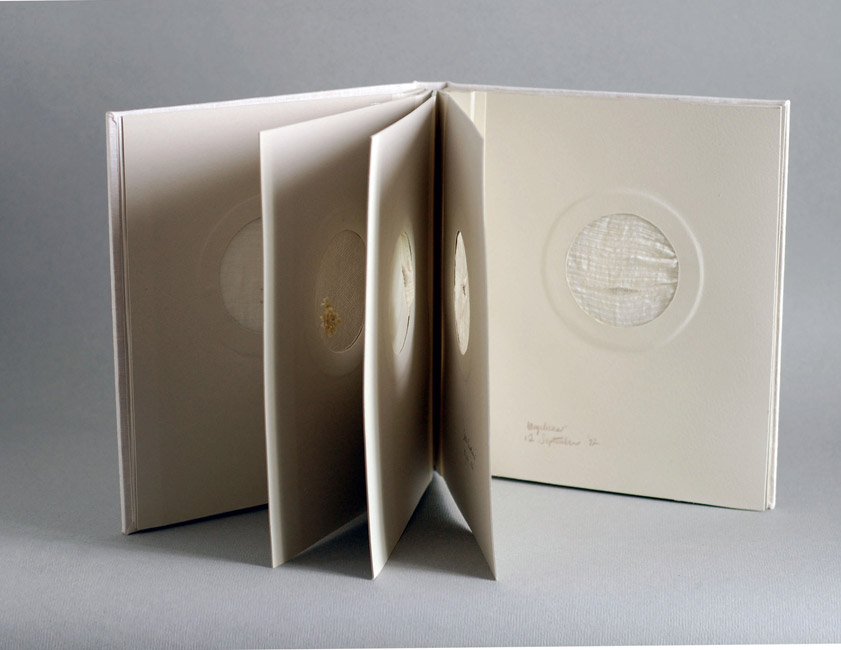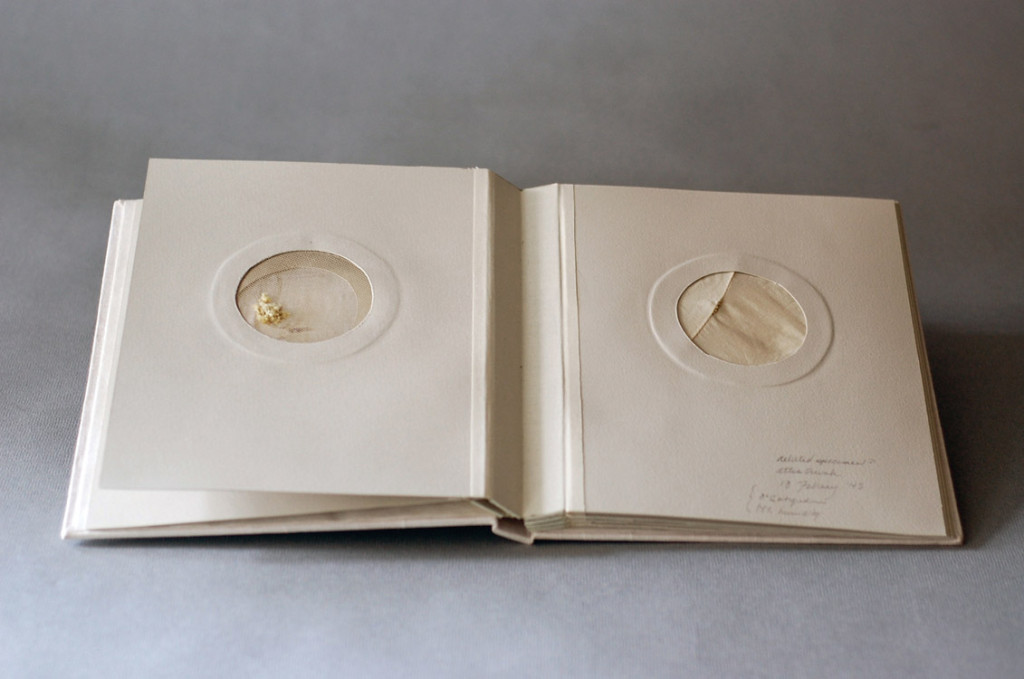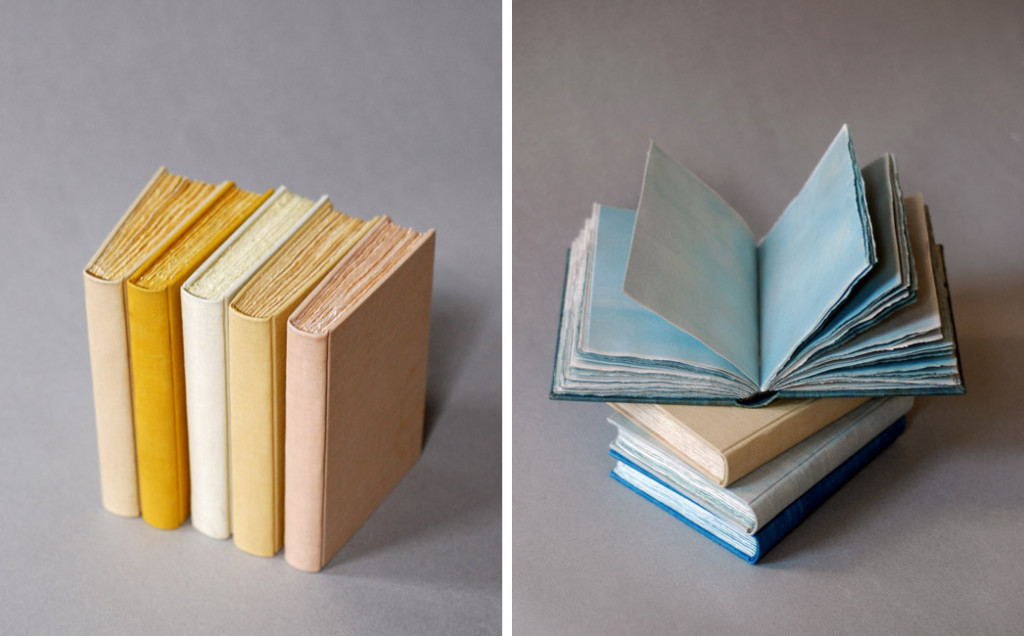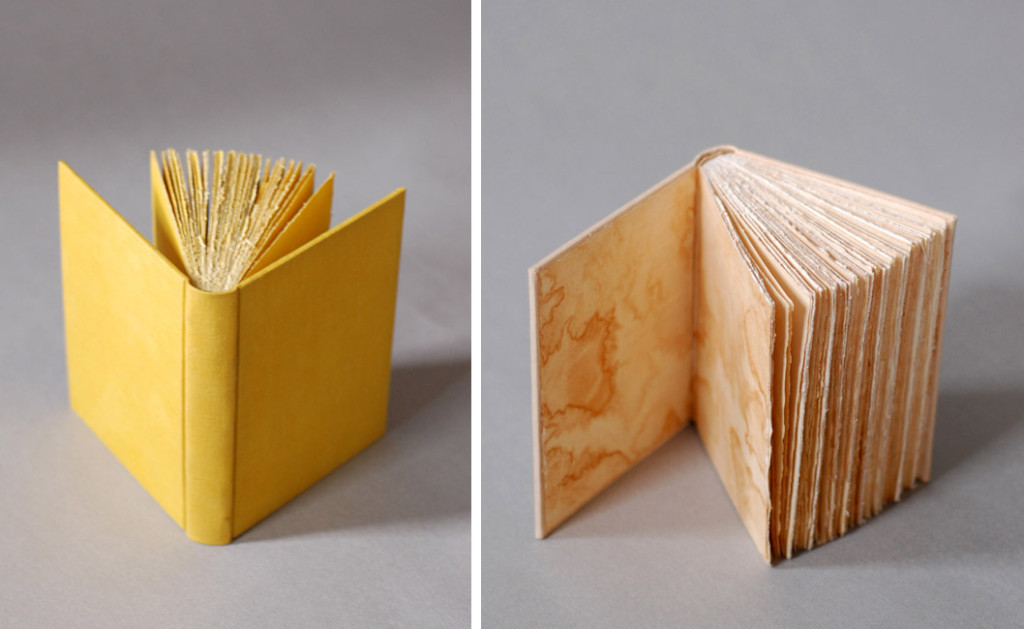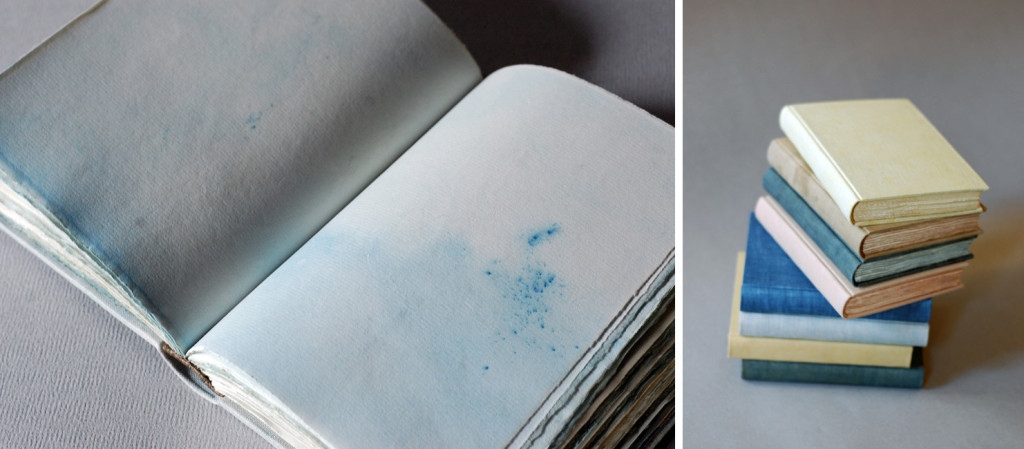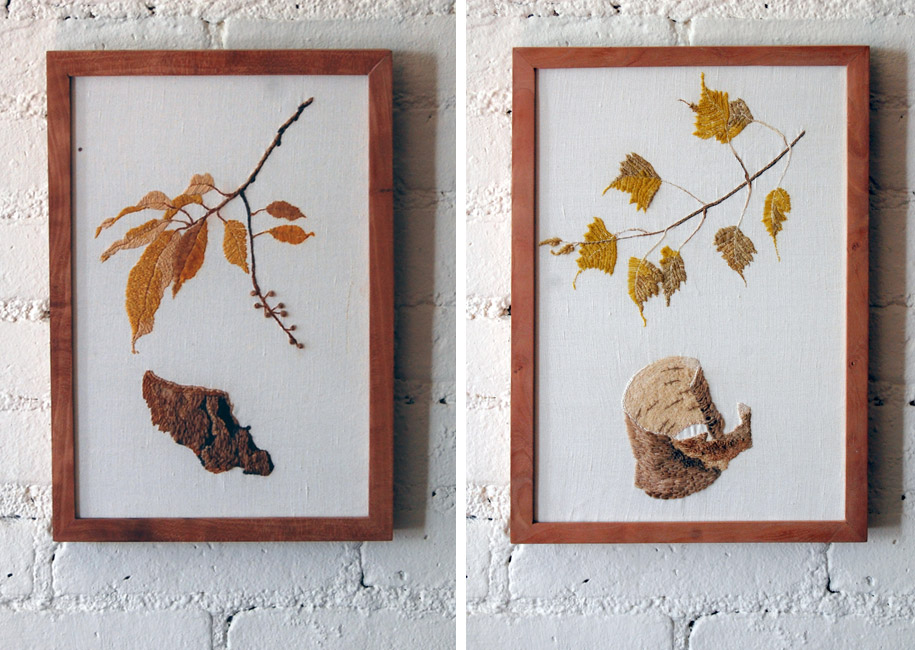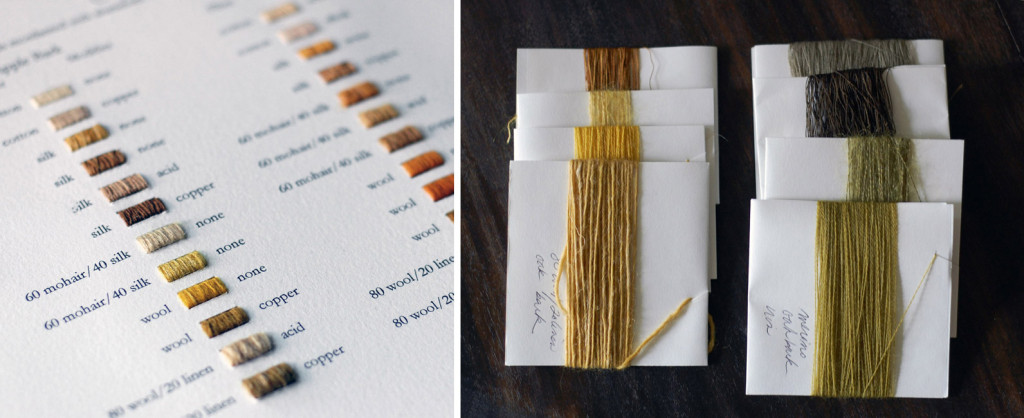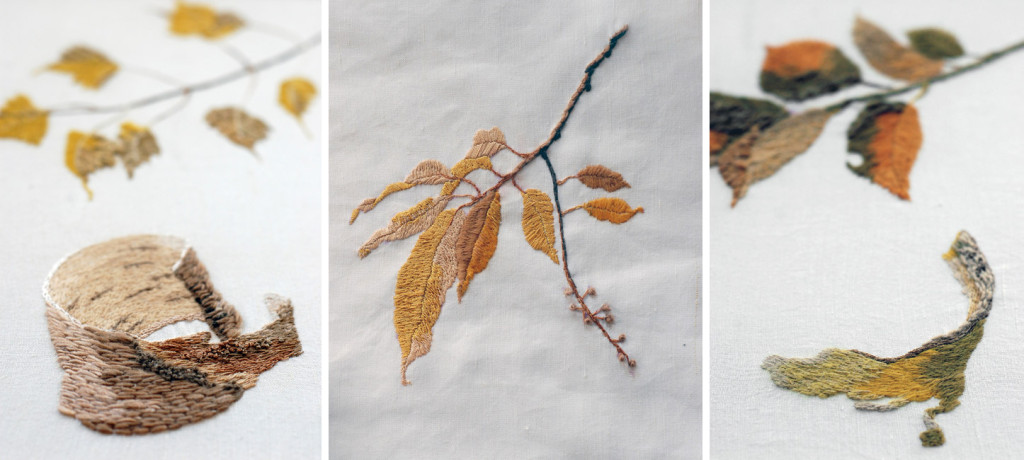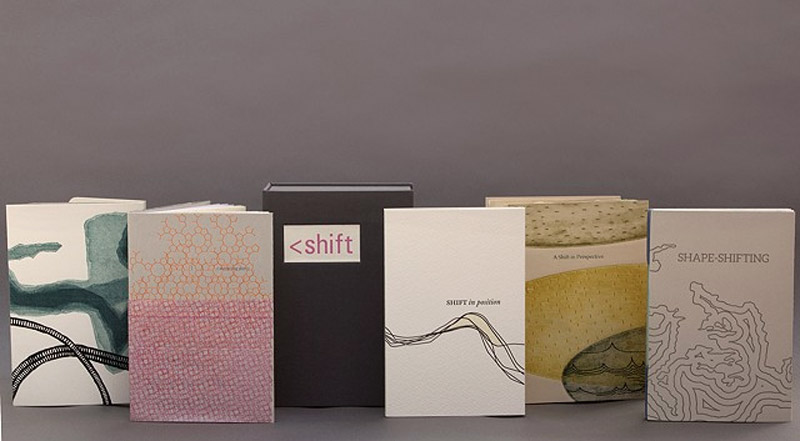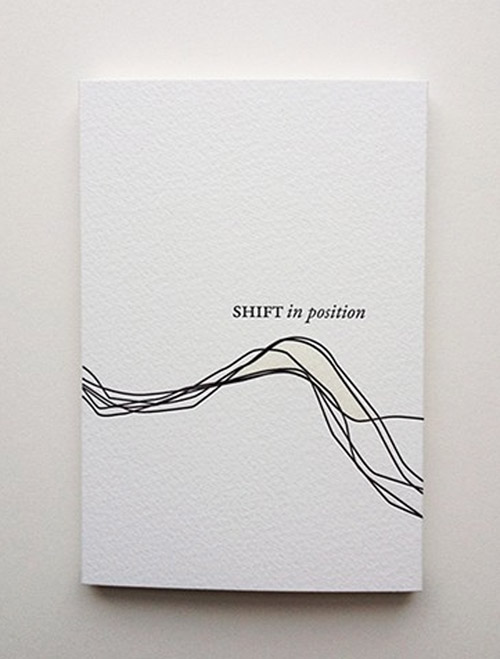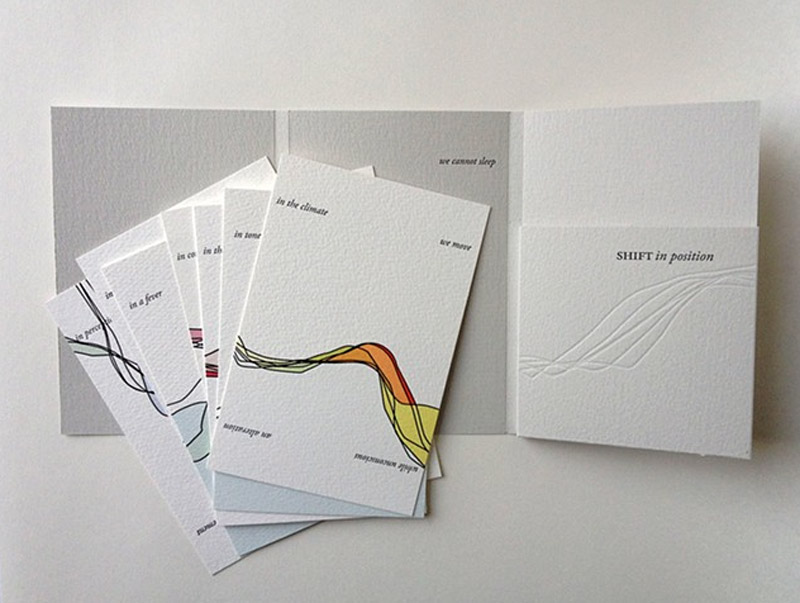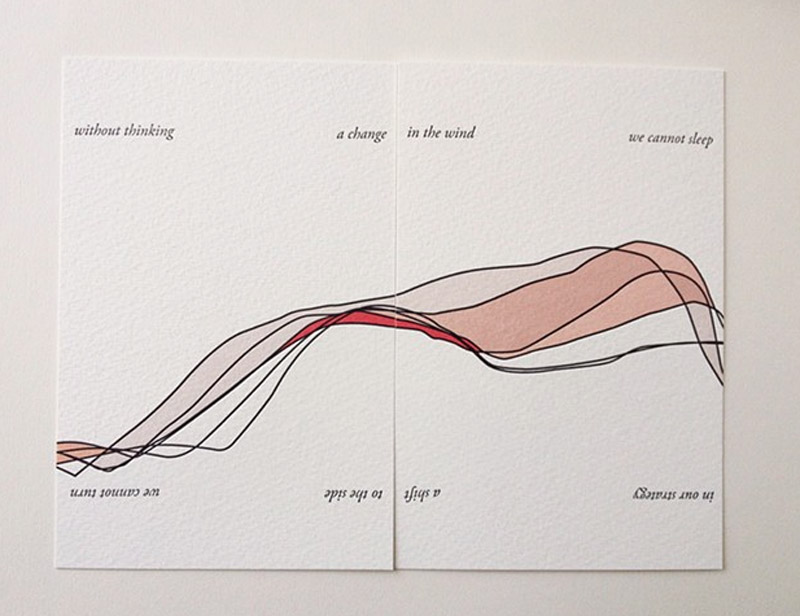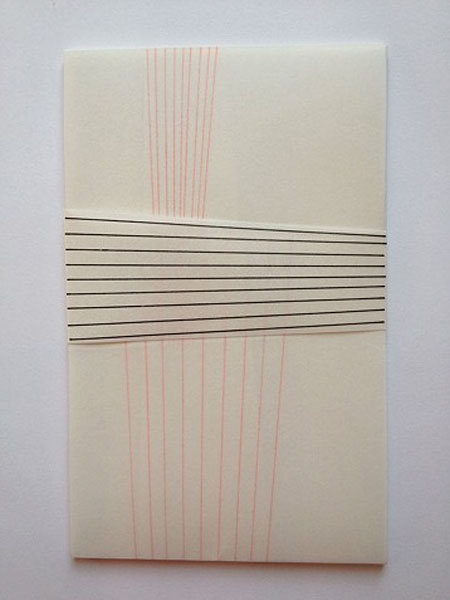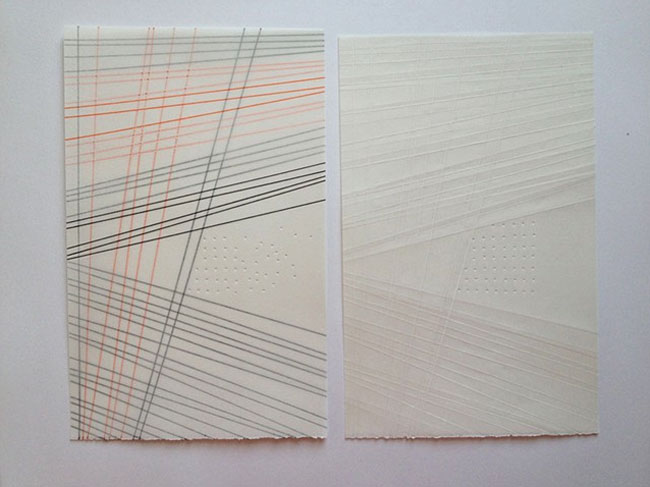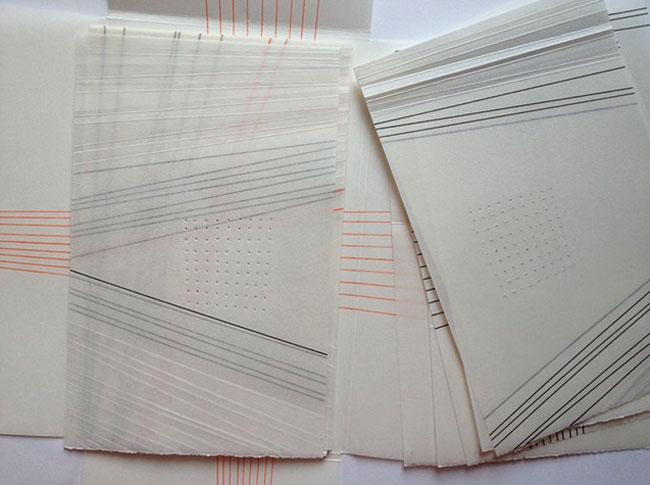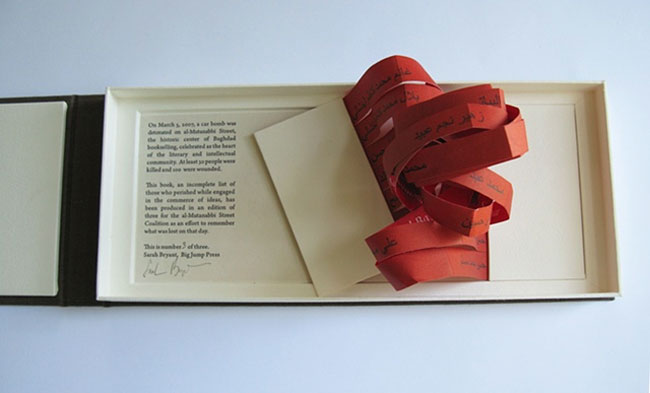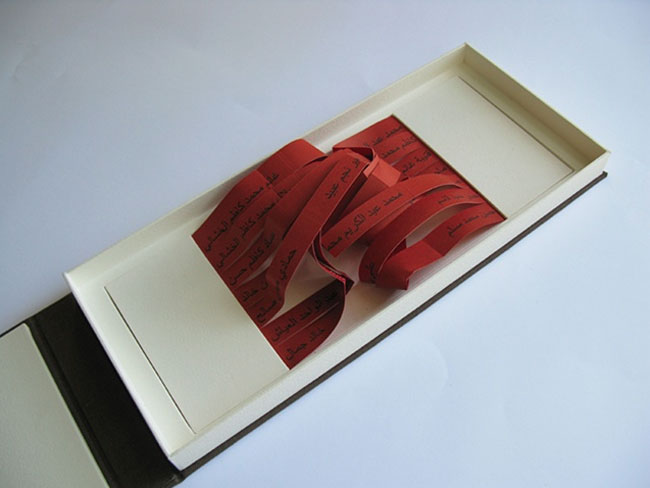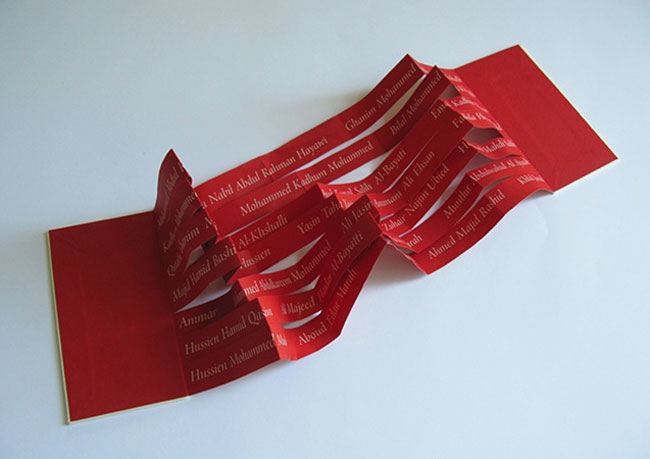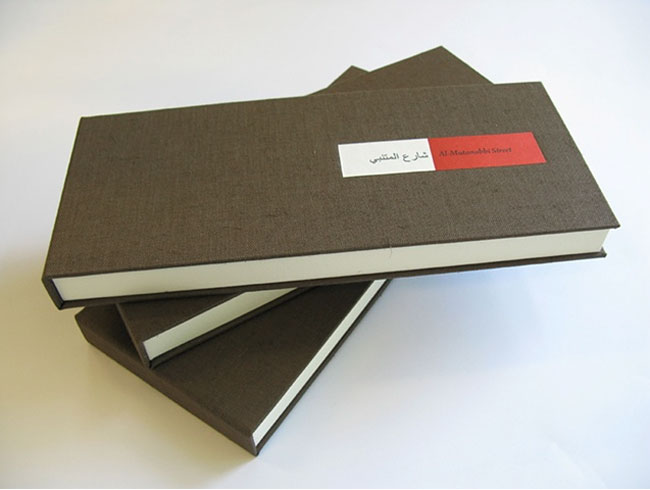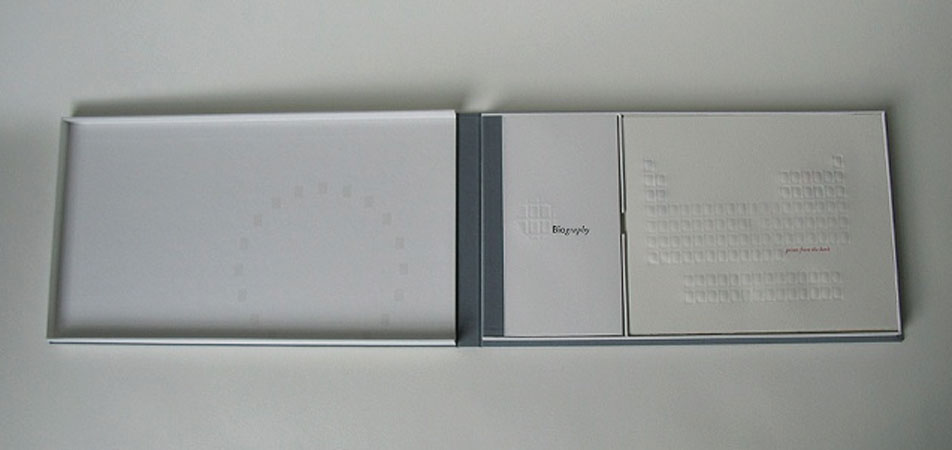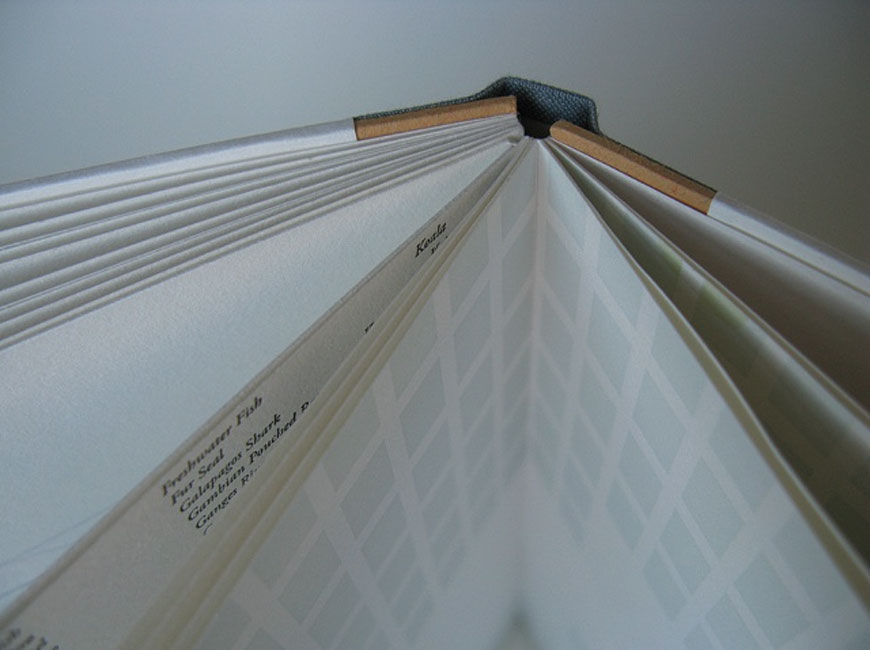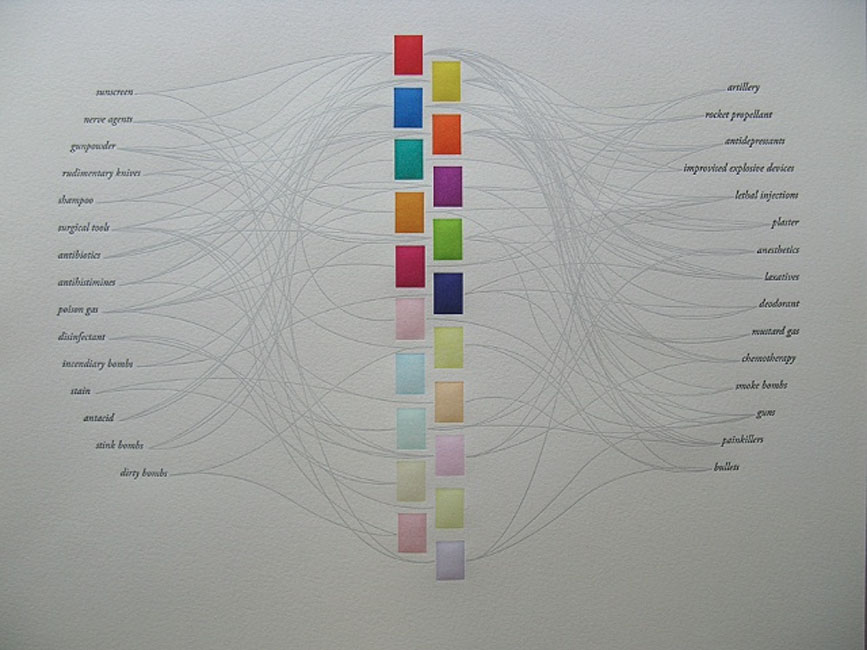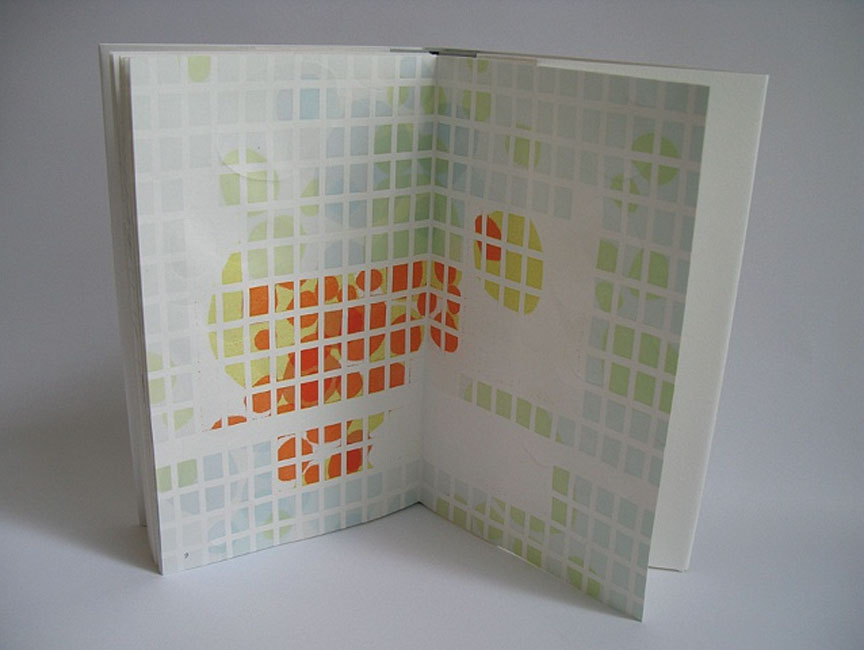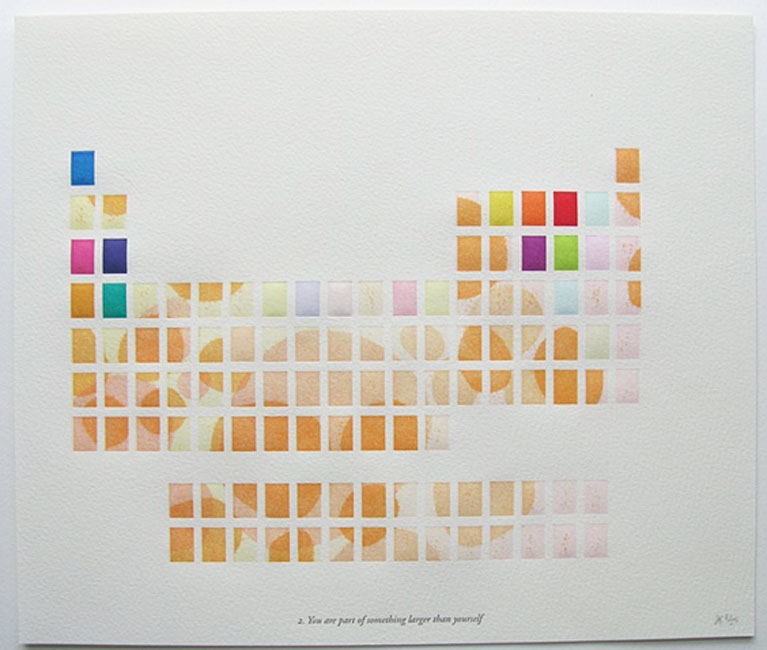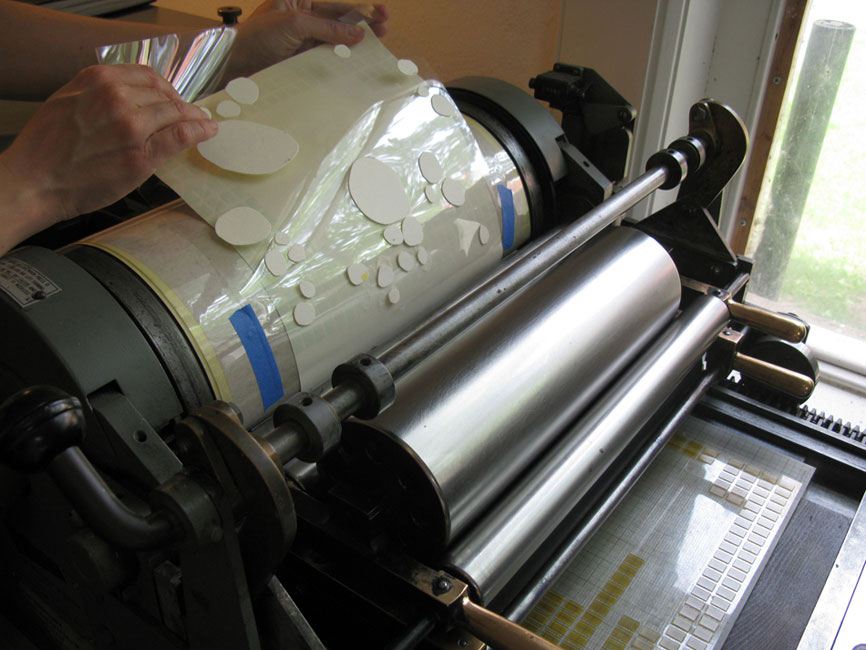The Tyvek has held up very well over time. I just saw a copy that has been in a collection that gets heavy use and it’s like new! I like handling it because it feels so indestructible and architectural, in keeping with the concept of the book. I believe I came across Tyvek as a material while working at the Wide Awake Garage. I knew I’d be hinging together pages and I wanted the hinge to be tough. I used a heat sensitive adhesive like Fusion 4000 to adhere the Tyvek to the pages. You do have to experiment with Tyvek as sometimes excessive heat can make the Tyvek warp a bit. But I didn’t have any problems using it.
Buckminster Fuller was a visionary, forward-looking architect. Tyvek has a somewhat futuristic flavor – a paper that doesn’t tear and is made from synthetic material. It was a perfect fit for the project. Because it doesn’t tear, it almost feels like you can arrange the panels of the book into various architectural shapes. Going further, Buckminster Fuller’s geodesic domes are visually all about the lines where two planes meet. The hinge areas become important as reflections of the design of the geodesic dome.
